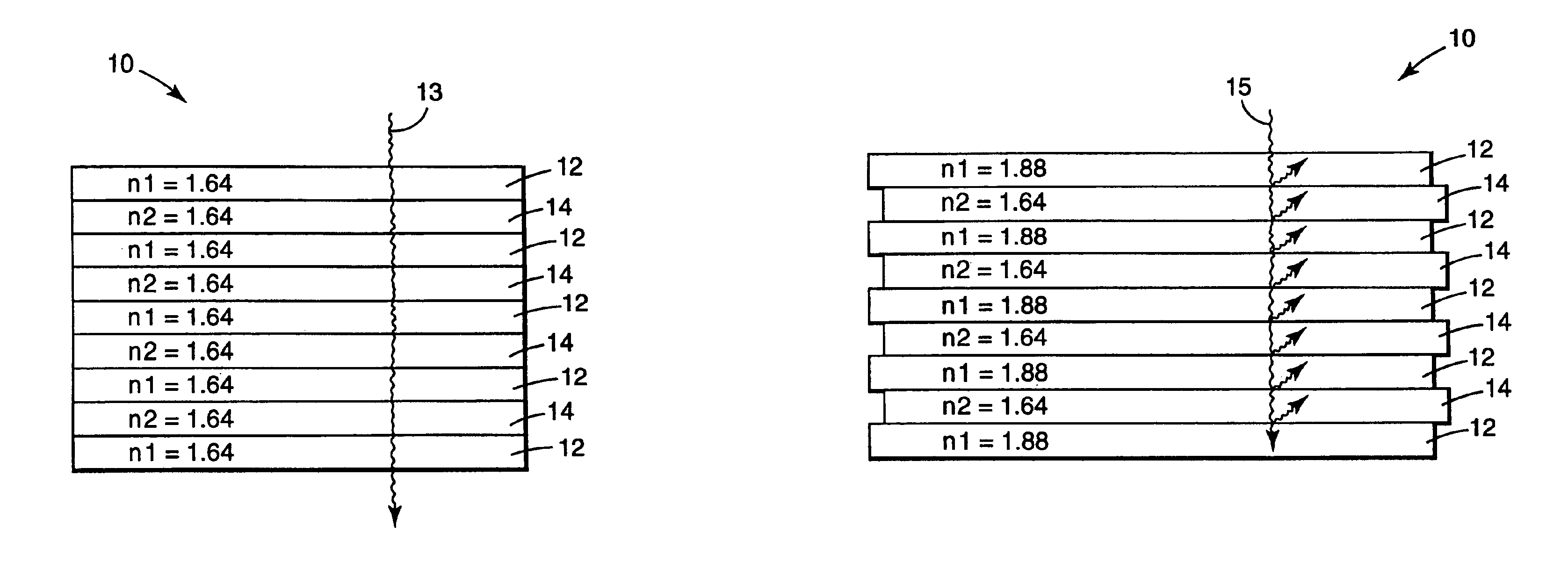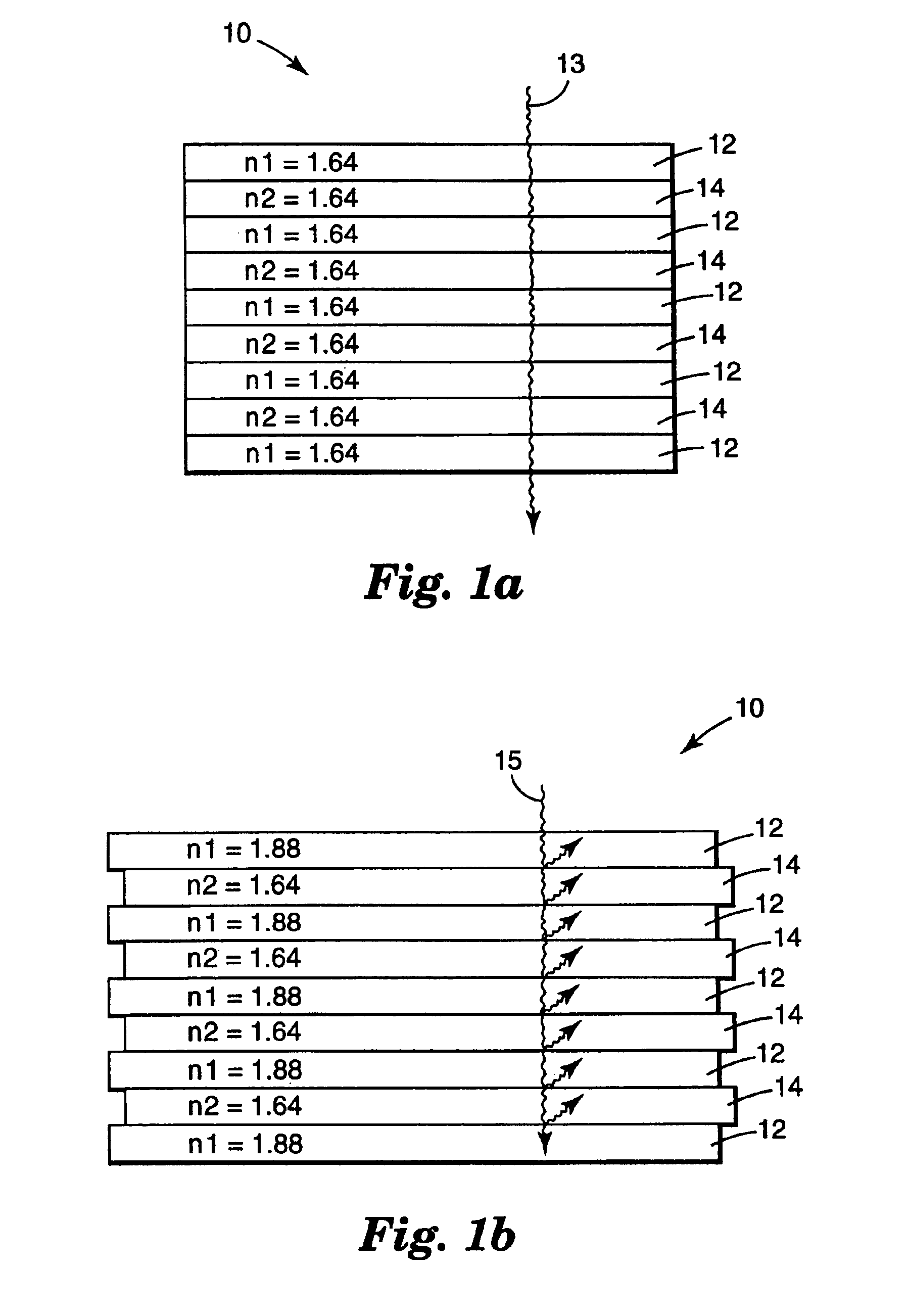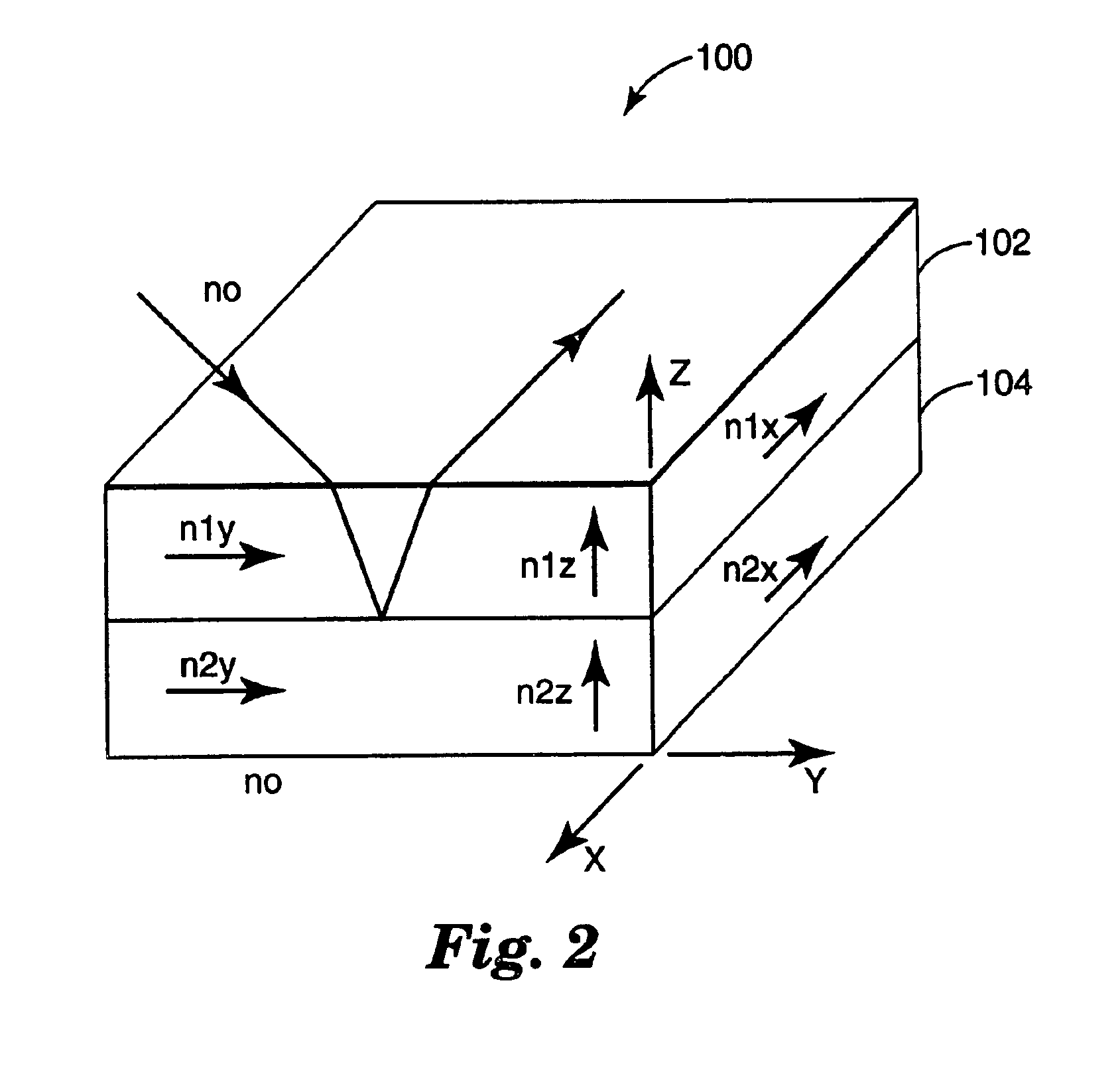Backlight system with multilayer optical film reflector
a backlight system and optical film technology, applied in non-linear optics, synthetic resin layered products, domestic applications, etc., can solve the problems of degrading the performance of the backlight, increasing the absorption loss, and reducing the efficiency of the backlight. , to achieve the effect of reducing the cost, weight and bulk of the backlight system, high light efficiency and low weigh
- Summary
- Abstract
- Description
- Claims
- Application Information
AI Technical Summary
Benefits of technology
Problems solved by technology
Method used
Image
Examples
example 1 (
PEN:THV 500, 449, Mirror)
[0060]A coextruded film containing 449 layers was made by extruding the cast web in one operation and later orienting the film in a laboratory film-stretching apparatus. A Polyethylene naphthalate (PEN) with an Intrinsic Viscosity of 0.53 dl / g (60 wt. % phenol / 40 wt. % dichlorobenzene) was delivered by one extruder at a rate of 56 pounds per hour and THV 500 (a fluoropolymer available from Minnesota Mining and Manufacturing Company) was delivered by another extruder at a rate of 11 pounds per hour. The PEN was on the skin layers and 50% of the PEN was present in the two skin layers. The feedblock method was used to generate 57 layers which was passed through three multipliers producing an extrudate of 449 layers. The cast web was 20 mils thick and 12 inches wide. The web was later biaxially oriented using a laboratory stretching device that uses a pantograph to grip a square section of film and simultaneously stretch it in both directions at a uniform rate. ...
example 2 (
PEN:PMMA, 601, Mirror)
[0062]A coextruded film containing 601 layers was made on a sequential flat-film-making line via a coextrusion process. Polyethylene Naphthalate (PEN) with an Intrinsic Viscosity of 0.57 dl / g (60 wt. % phenol / 40 wt. % dichlorobenzene) was delivered by extruder A at a rate of 114 pounds per hour with 64 pounds per hour going to the feedblock and the rest going to skin layers described below. PMMA (CP-82 from ICI of Americas) was delivered by extruder B at a rate of 61 pounds per hour with all of it going to the feedblock. PEN was on the skin layers of the feedblock. The feedblock method was used to generate 151 layers using the feedblock such as those described in U.S. Pat. No. 3,801,429, after the feedblock two symmetric skin layers were coextruded using extruder C metering about 30 pounds per hour of the same type of PEN delivered by extruder A. This extrudate passed through two multipliers producing an extrudate of about 601 layers. U.S. Pat. No. 3,565,985 de...
example 3 (
PEN:PCTG, 449, Polarizer)
[0064]A coextruded film containing 481 layers was made by extruding the cast web in one operation and later orienting the film in a laboratory film-stretching apparatus. The feedblock method was used with a 61 layer feedblock and three (2×) multipliers. Thick skin layers were added between the final multiplier and the die. Polyethylene naphthalate (PEN) with an intrinsic viscosity of 0.47 dl / g (60 wt. % phenol / 40 wt. % dichlorobenzene) was delivered to the feedblock by one extruder at a rate of 25.0 pounds per hour. Glycol modified polyethylene dimethyl cyclohexane terephthalate (PCTG 5445 from Eastman) was delivered by another extruder at a rate of 25.0 pounds per hour. Another stream of PEN from the above extruder was added as skin layers after the multipliers at a rate of 25.0 pounds per hour. The cast web was 0.007 inches thick and 12 inches wide. The web was layer uniaxially oriented using a laboratory stretching device that uses a pantograph to grip a ...
PUM
| Property | Measurement | Unit |
|---|---|---|
| Fraction | aaaaa | aaaaa |
| Fraction | aaaaa | aaaaa |
| Fraction | aaaaa | aaaaa |
Abstract
Description
Claims
Application Information
 Login to View More
Login to View More - R&D
- Intellectual Property
- Life Sciences
- Materials
- Tech Scout
- Unparalleled Data Quality
- Higher Quality Content
- 60% Fewer Hallucinations
Browse by: Latest US Patents, China's latest patents, Technical Efficacy Thesaurus, Application Domain, Technology Topic, Popular Technical Reports.
© 2025 PatSnap. All rights reserved.Legal|Privacy policy|Modern Slavery Act Transparency Statement|Sitemap|About US| Contact US: help@patsnap.com



